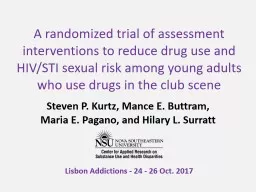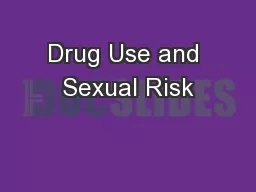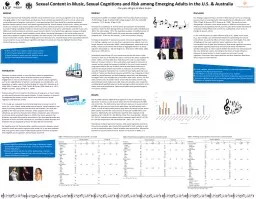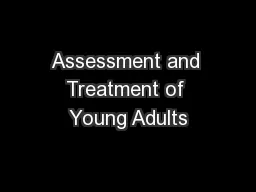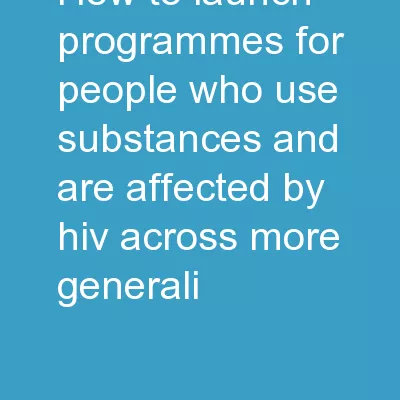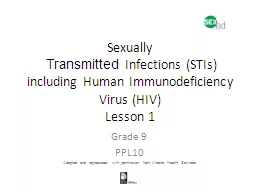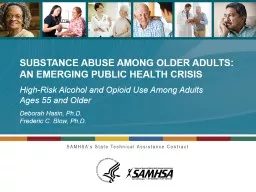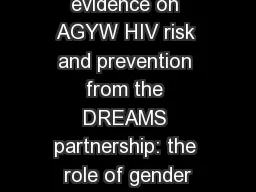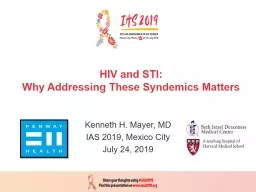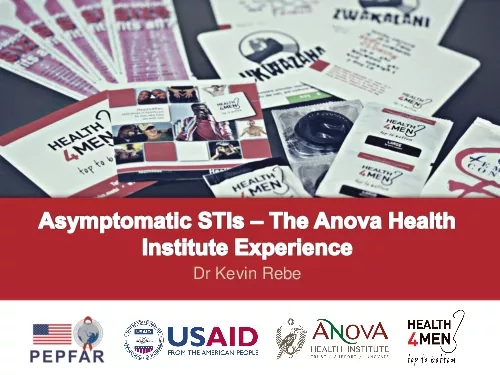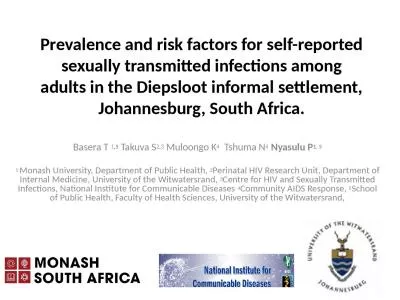PPT-A randomized trial of assessment interventions to reduce drug use and HIV/STI sexual risk
Author : lois-ondreau | Published Date : 2019-11-02
A randomized trial of assessment interventions to reduce drug use and HIVSTI sexual risk among young adults who use drugs in the club scene Steven P Kurtz Mance
Presentation Embed Code
Download Presentation
Download Presentation The PPT/PDF document "A randomized trial of assessment interve..." is the property of its rightful owner. Permission is granted to download and print the materials on this website for personal, non-commercial use only, and to display it on your personal computer provided you do not modify the materials and that you retain all copyright notices contained in the materials. By downloading content from our website, you accept the terms of this agreement.
A randomized trial of assessment interventions to reduce drug use and HIV/STI sexual risk: Transcript
Download Rules Of Document
"A randomized trial of assessment interventions to reduce drug use and HIV/STI sexual risk"The content belongs to its owner. You may download and print it for personal use, without modification, and keep all copyright notices. By downloading, you agree to these terms.
Related Documents

